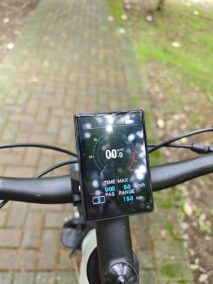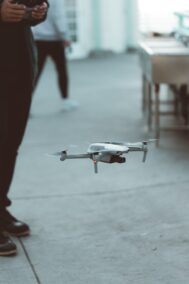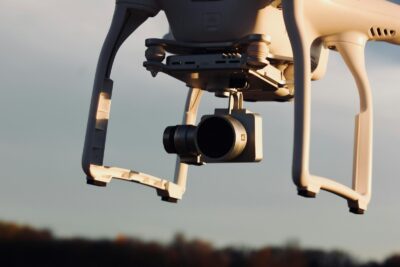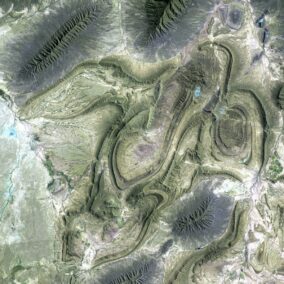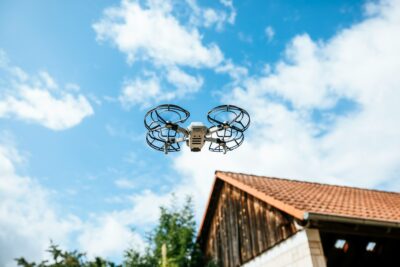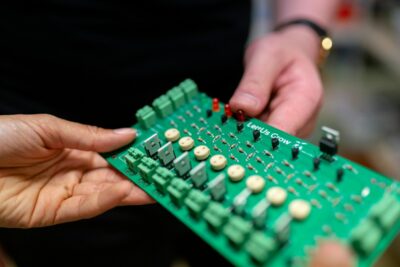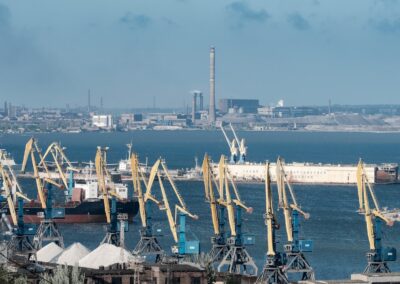How UTM Technology Enhances Air Traffic Management Systems
Boosting Airspace Safety through UTM Integration
The integration of UTM technology with existing air traffic management systems is a transformative approach that significantly enhances overall airspace safety. Unmanned Traffic Management (UTM) technology allows for the effective management of unmanned aerial vehicles (UAVs) or drones, which are increasingly common in both commercial and recreational uses. This integration ensures that drones operate within controlled parameters, preventing potential collisions and unauthorized airspace intrusions. For business executives and mid-level managers in the aviation sector, particularly in rapidly developing regions like Saudi Arabia and the UAE, the safety implications are profound. Riyadh and Dubai, with their burgeoning drone industries, are at the forefront of implementing UTM systems to safeguard their skies.
UTM systems employ advanced algorithms and real-time data to monitor and manage drone traffic. By integrating UTM with traditional air traffic management, authorities can maintain comprehensive oversight of all aerial activities, thus minimizing the risk of accidents. This is particularly crucial in busy airspaces such as those over major cities and airports. Furthermore, the collaboration between manned and unmanned systems fosters a safer environment for all airspace users, a key consideration for countries investing heavily in smart city initiatives and modern infrastructure.
The role of artificial intelligence (AI) in UTM technology cannot be understated. AI-powered UTM systems can predict and mitigate potential conflicts, ensuring seamless operation and enhanced safety. In the context of Saudi Arabia’s Vision 2030 and the UAE’s strategic technological advancements, adopting AI-driven UTM solutions aligns with their goals of becoming global leaders in innovation. For entrepreneurs and business leaders, this presents an opportunity to engage in cutting-edge technology that not only promotes safety but also supports economic growth through the burgeoning drone industry.
Improving Airspace Efficiency with UTM
In addition to enhancing safety, the integration of UTM technology with air traffic management systems substantially improves airspace efficiency. Efficient airspace management is critical in regions like Saudi Arabia and the UAE, where air traffic is continuously growing due to tourism, business travel, and the rise of drone deliveries and services. The ability to optimize airspace usage ensures that both manned and unmanned aircraft can coexist and operate without unnecessary delays or conflicts.
One of the primary benefits of UTM technology is its capacity to manage high volumes of drone traffic effectively. This capability is particularly beneficial for logistics and delivery companies operating in urban areas like Riyadh and Dubai, where the demand for rapid and efficient delivery services is high. By facilitating smoother and more coordinated drone operations, UTM systems help reduce congestion and streamline processes, leading to faster and more reliable delivery services.
Moreover, the efficiency gains from UTM integration extend to environmental benefits. By optimizing flight paths and reducing unnecessary airborne delays, UTM technology contributes to lower fuel consumption and reduced carbon emissions. This is in line with global sustainability goals and resonates well with the environmental initiatives of forward-thinking nations. Business executives and managers in the aviation and logistics sectors can leverage these efficiency improvements to enhance their operational effectiveness and sustainability credentials.
Enhancing Airspace Capacity with UTM
The integration of UTM technology also plays a crucial role in increasing overall airspace capacity. As the demand for air travel and drone operations continues to rise, the capacity of existing air traffic management systems is being stretched to its limits. UTM technology provides a scalable solution to this challenge by enabling more aircraft to safely share the same airspace.
In regions like the UAE and Saudi Arabia, where ambitious infrastructure projects are underway, expanding airspace capacity is vital. The successful integration of UTM systems allows for the accommodation of a higher number of flights without compromising safety or efficiency. This capability is particularly important for cities like Dubai, which aims to become a global aviation hub. By leveraging UTM technology, Dubai can manage its growing air traffic more effectively, ensuring seamless operations and maintaining its competitive edge.
Furthermore, UTM technology supports the integration of innovative aviation concepts, such as urban air mobility (UAM). UAM envisions a future where air taxis and other advanced aerial vehicles become commonplace in urban transportation networks. For cities like Riyadh and Dubai, embracing UAM and UTM technologies represents a step towards creating smart, connected urban environments that offer enhanced mobility options for residents and visitors alike. Business leaders and project managers can capitalize on these advancements to drive growth and innovation in the aviation and transportation sectors.
The Role of Blockchain in UTM Technology
Blockchain technology is another modern innovation that complements UTM systems, providing enhanced security and transparency in air traffic management. By leveraging blockchain, UTM systems can create immutable records of drone flights, including their paths, operations, and compliance with regulations. This ensures accountability and can help resolve disputes or incidents involving drone operations. For regions like Saudi Arabia and the UAE, where regulatory frameworks are being developed to support the growing drone industry, blockchain integration offers a robust solution to ensure compliance and build trust among stakeholders.
Blockchain also facilitates the secure exchange of information between various stakeholders, including drone operators, air traffic controllers, and regulatory authorities. This seamless information flow is crucial for maintaining the efficiency and safety of airspace operations. In the context of the UAE’s smart city initiatives and Saudi Arabia’s Vision 2030, the combination of UTM and blockchain technologies aligns with their broader goals of digital transformation and innovation in governance.
For entrepreneurs and business leaders, the integration of blockchain with UTM technology presents opportunities to develop new business models and services that capitalize on the enhanced security and efficiency provided by these technologies. It also offers a way to differentiate their offerings in a competitive market, appealing to customers who prioritize safety and regulatory compliance.
Generative AI and the Future of UTM
Generative AI represents another exciting frontier in the evolution of UTM technology. By utilizing machine learning algorithms, generative AI can develop predictive models that enhance the decision-making capabilities of UTM systems. This includes forecasting potential airspace conflicts, optimizing flight paths, and adapting to dynamic changes in air traffic patterns. For cities like Riyadh and Dubai, the integration of generative AI into UTM systems ensures that their airspace management remains at the cutting edge of technological advancements.
The application of generative AI in UTM also supports the broader adoption of autonomous drone operations. As AI systems become more sophisticated, they can handle increasingly complex tasks, reducing the need for human intervention and enabling more efficient and scalable drone operations. This is particularly relevant for large-scale events or emergency response scenarios where rapid and coordinated drone deployment is essential.
Business executives and mid-level managers in the technology and aviation sectors can harness the potential of generative AI to drive innovation and improve operational efficiency. By staying ahead of technological trends and investing in AI-driven UTM solutions, they can position their organizations for long-term success in a rapidly evolving market.
Conclusion: Embracing UTM Technology for Future Success
The integration of UTM technology with existing air traffic management systems is a pivotal advancement that enhances airspace safety, efficiency, and capacity. For business executives, mid-level managers, and entrepreneurs in Saudi Arabia, the UAE, Riyadh, and Dubai, embracing UTM technology is essential to staying competitive and ensuring sustainable growth. By leveraging the capabilities of UTM, AI, blockchain, and generative AI, these regions can position themselves as leaders in aviation innovation and smart city development.
Investing in UTM technology not only addresses immediate challenges but also lays the groundwork for future advancements in urban air mobility and autonomous drone operations. The collaboration between public and private sectors in implementing these technologies will be crucial to realizing their full potential. As the aviation landscape continues to evolve, staying informed and proactive in adopting these innovations will be key to achieving long-term business success and maintaining a competitive edge in the global market.
—
#UTMtechnology #AirTrafficManagement #AirspaceSafety #AirspaceEfficiency #AirspaceCapacity #SaudiArabia #UAE #Riyadh #Dubai #ArtificialIntelligence #Blockchain #Metaverse #GenerativeAI #ModernTechnology #BusinessSuccess #Leadership #ManagementSkills #ProjectManagement





